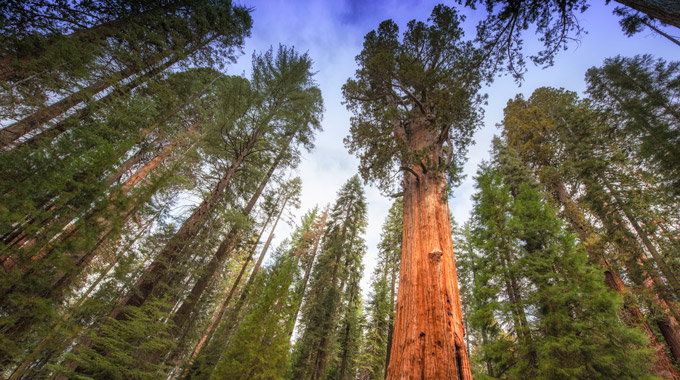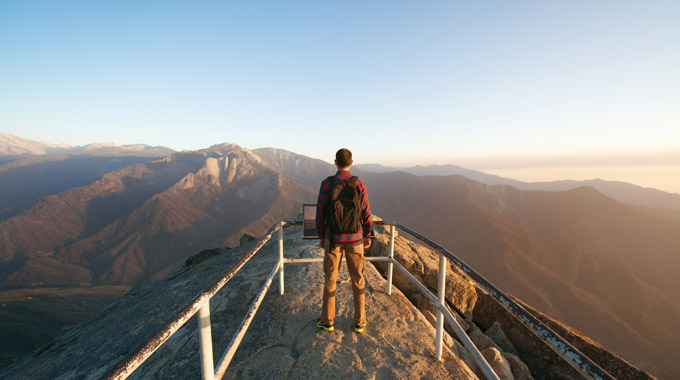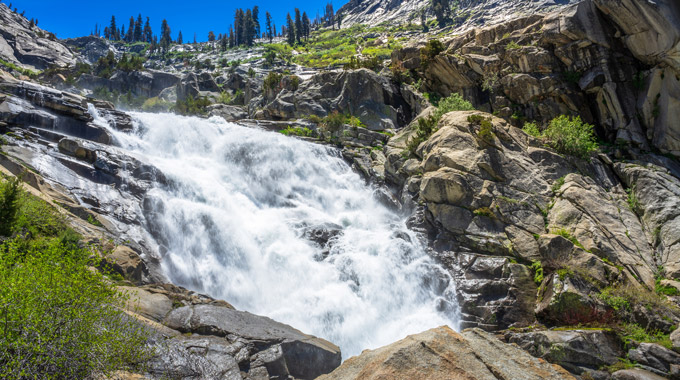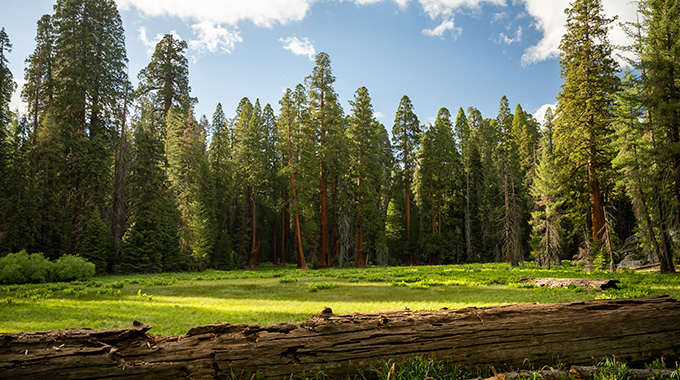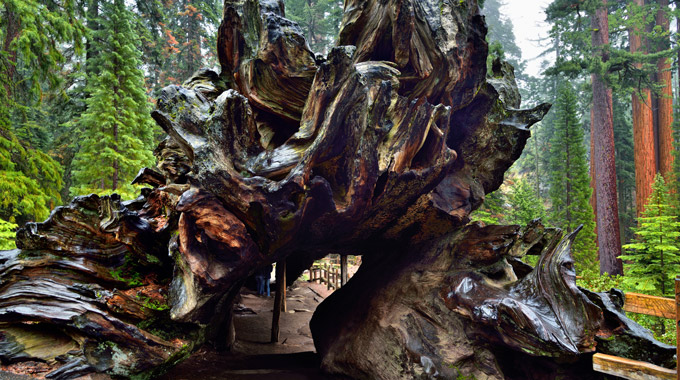The giant sequoia (Sequoiadendron giganteum) is the largest tree species in the world, and visitors can be surrounded by these towering giants at Sequoia and Kings Canyon National Parks.
The 2 parks are in the southern Sierra Nevada range. Sequoia National Park dates to 1890, when it was established to protect sequoia groves from the timber industry; Kings Canyon National Park was founded 50 years later to preserve the peaks, meadows, granite domes, and glacial canyons of the nearby backcountry.
Today the parks are administered jointly, with a single entry permit granting access to both. Together they offer visitors a wide cross-section of Sierra landscapes, with elevations ranging from 1,200 feet to more than 14,000 feet at the peak of Mount Whitney, the tallest mountain in the contiguous 48 states. We look at 5 can't-miss sights that any visitor should see.


